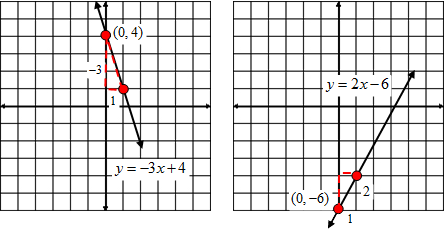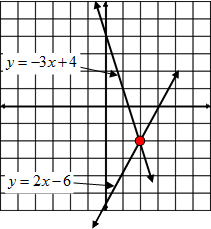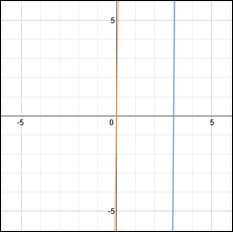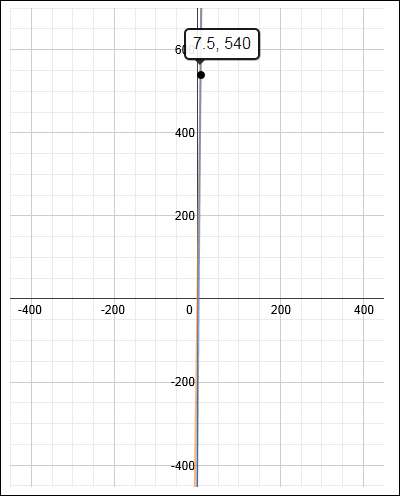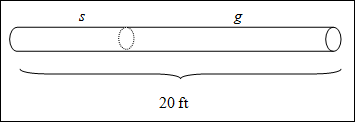SYSTEMS OF EQUATIONS
 |
Unit Overview
This unit is about solving systems of equations graphically and algebraically. Systems of equations are used in real-world situations where two variables need to be determined. Some examples are maximum profit of sales, cost, and even in predicting the weather.
Graphing Systems of Equations
Two equations in two variables are called a system of equations. The solution to a system of equations is the point on a coordinate plane where the two equations intersect.
There are three possible solutions for a system of equations.
| 1) The lines may intersect at one point; therefore, the solutions would be an ordered pair (x, y). |
| 2) The lines may be parallel and not intersect at all; therefore, the solution would be no solution. |
| 3) The lines may be identical and would lie on top of each other when graphed; so, the solution would be many solutions. |
Each of the three possible solutions is shown in the three graphs below.
y = 2x |
y = |
y = –x + 2 |
y = –3x + 5 |
y = |
y = –x + 2 |
 |
 |
 |
One Solution |
No Solution |
Many Solutions |
| Solving a System of Equations by Graphing |
| To solve a system of equations by graphing, first solve each equation for y and make sure they are in the slope-intercept form: |
“y = mx + b” |
| Plot the y-intercept and use the slope ratio of |
Example #1: Use graphing to solve the system of equations shown below.
(2, –2). Another way to state the solution is to say that x = 2 and y = –2. Note: Please observe that if you put the ordered pair into each of the original (or transformed) equations, it is a solution for the equations (makes it true)! |
Let's try!
This check shows that indeed, (2, –2), the solution of the system, is a point on the graphs of both equations. It is the point where the two graphs cross each other (intersect). |
| Application |
| Let's look at a simple application of how graphing a system of equations can help solve real-world problems. In the next example, write an equation to describe each train's travels, and then graph both equations to find the solution. |
 Example #2: A train leaves a station and travels east at 72 KPM. Three hours later a second train leaves on a parallel track and travels east at 120 KPH. When will the second train overtake the first train. (Note: This problem is set up for ideal conditions.) Example #2: A train leaves a station and travels east at 72 KPM. Three hours later a second train leaves on a parallel track and travels east at 120 KPH. When will the second train overtake the first train. (Note: This problem is set up for ideal conditions.) First, since this problem is about distance, rate, and time, we will use d = r t to set up the equations. We'll use a table to organize our data.
*Note: Train 2 will have 3 less hours of travel time, so "t – 3" represents its time.
Now, its time to graph the two equations. Use a graphing calculator or click here for a link to an online grapher. The first graph doesn't really tell us much. The orange and blue lines look parallel. So, we must zoom "out" to see if they truly are parallel or if they intersect.
After zooming "out" many times, we find that the two graphs intersect at (7.5, 540).
This means that after 7.5 hours, the two trains will be side by side after they have traveled 540 miles! Let's check our answer to be sure this is true. Substitute the ordered pair (7.5, 540) in each equation to see if it tests true.
Indeed, (7.5, 540) tests true for both equations! |
Stop! Go to Questions #1-11 about this section, then return to continue on to the next section.
Solving Systems by Substitution
Another way to solve a system of equations is algebraically using substitution. To solve a system of equations by substitution:
| 1) Solve one equation for a variable (it is much easier to solve an equation for a variable that has a coefficient of 1). |
| 2) Substitute this value into the other equation and find the value of one variable. |
| 3) Substitute the value found in step 2 into either of the equations to solve for the second variable. |
Follow the examples below:
One Solution |
Example #1: Solve the system below by using substitution. Use the steps to plan a solution. |
In this particular case, we have choices as to which variable to solve for as both x and y have one as their coefficients in the first equation. |
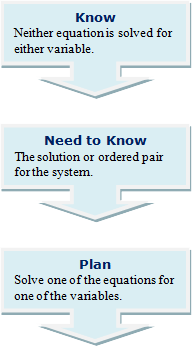 |
| 1) Solve the first equation for either x or y or solve the second equation for y. (Again, it is easier to solve an equation for a variable that has a coefficient of 1). We'll solve the first equation for y. |
||||||||||||||||||||||||||
|
||||||||||||||||||||||||||
| 2) Substitute 2 – x into the second equation for y. |
||||||||||||||||||||||||||
|
||||||||||||||||||||||||||
3) Substitute x = 3 back into either of the equations to solve for y. We'll use the first equation.
The solution to this system is (3, –1). |
Now, let's look at this same problem again, but solve the first equation for x to begin. Do you think the solution will be the same?
| 1) Solve the first equation for either x or y or solve the second equation for y. This time we'll choose to solve the first equation for x. |
||||||||||||||||||||||
|
||||||||||||||||||||||
| 2) Substitute 2 – y into the second equation for x. |
||||||||||||||||||||||
|
||||||||||||||||||||||
3) Substitute y = –1 back into either of the equations to solve for x. We'll use the first equation.
The solution to this system is (3, –1). Are the two solutions the same? Yes! |
Example #2: Solve the system below by using substitution. |
In this particular case, the only variable with a coefficient of 1 is x in the second equation. |
| 1) Solve the second equation for x. |
||||||||||||||||||||||
|
||||||||||||||||||||||
| 2) Substitute –21 + 4y into the first equation for x. |
||||||||||||||||||||||
|
||||||||||||||||||||||
3) Substitute y = 8.5 back into either of the equations to solve for x. We'll substitute into the first equation.
The solution to this system is (13, 8.5). |
Just as the systems of equations that were graphed had a possibility of 3 solutions, so do the systems of equations that are solved by substitution.
No Solution |
Example #3: Solve the system below by using substitution. |
|
| 1) Solve the first equation for y. |
||||||||||
|
||||||||||
| 2) Substitute 9 – 2x into the second equation for y. |
||||||||||
Since this is NOT a true statement and the variable (x) has been eliminated completely; this system does not have a solution. So you will say that the solution is no solution. |
Many Solutions |
Example #4: Solve the system below by using substitution. |
|
| 1) Solve the second equation for y. |
||||||||||||||||||
|
||||||||||||||||||
| 2) Substitute 4 + 2x into the first equation for y. |
||||||||||||||||||
Since this is a true statement and the variable (x) has been eliminated completely; this means that the solution is many solutions. |
Application |
| Let's look at a simple application of how using sustitution with a system of equations can help solve real-world problems. In the next example, write an equation to describe each train's travels, and then graph both equations to find the solution. |
| Example #5: An installer of underground irrigation systems wants to cut a 20‑foot length of tubing into two pieces. The longer piece is to be 2 feet longer than twice the shorter piece. Find the length of each piece. First, sketch a picture to model the scenario and label it.
Now, let's put it all together and solve. We can write a second equation from the statement:
The shorter piece is 6 feet. The longer piece is found by substituting 6 in for either equation.
The longer piece is 14 feet. Check the answers using the other equation.
|
Stop! Go to Questions #12-33 to complete this unit.


